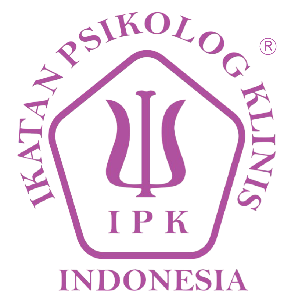Pembentukan Identitas Kolektif pada Gerakan Konservasi Mangrove
The Collective Identity Formation of a Mangrove Conservation Movement
DOI:
https://doi.org/10.26740/jptt.v12n1.p19-36Keywords:
Gerakan sosial, identitas kolektif, konservasi, representasi sosialAbstract
This study aims to understand the collective identity formation of Kelompok Pantai Lestari (KPL) as the mangrove conservation movement. This study employed a qualitative method with a constructivist grounded theory. The subjects of this study were 4 peoples who are the founders of KPL. Data were collected using in-depth interviews and analyzed through the steps from open, axial, and selective codings to the creation of a conceptual model of the collective identity formation in a mangrove conservation movement. The social representation theory was used as the framework that guided the data analysis. The results show that the foundation of the KPL as a conservation movement was related to the production of social knowledge among existing conservation groups on the importance of ecological values for improving welfare. KPL has been playing major role in producing local wisdom on environmental conservation and advocating the making of local regulations which put scientific knowledge into practice. The KPL’s mangrove conservation initiatives indicates that coastal communities have the potential to become a thinking society in environmental preservation; thus, it can be a reference for social engineering in environmental conservation that emphasizes on the collective action and identity.
Keywords: Collective identity, conservation, social movement, social representation
Abstrak: Penelitian ini bertujuan untuk memahami pembentukan identitas kolektif pada Kelompok Pantai Lestari KPL) sebagai gerakan konservasi mangrove. Penelitian ini menggunakan pendekatan kualitatif dengan metode constructivist grounded theory. Subjek penelitian adalah pendiri KPL berjumlah 4 orang. Data dikumpulkan melalui wawancara mendalam dan dianalisis mengikuti tahapan pengolahan data dari pengkodean open, axial, dan selektif hingga pembuatan model konseptual pembentukan identitas kolektif gerakan konservasi mangrove. Teori representasi sosial dimanfaatkan dalam interpretasi data. Hasil analisis menunjukkan lahirnya KPL sebagai gerakan konservasi menandai cara kerja representasi sosial yang berpusat pada produksi pengetahuan sosial tentang kelembagaan kelompok konservasi dan pentingnya nilai ekologis untuk peningkatan kesejahteraan. KPL berperan besar dalam memproduksi kearifan lokal dengan mengadvokasi lahirnya peraturan daerah yang mengkonstruksi pengetahuan ilmiah menjadi pengetahuan praktis dalam kehidupan sehari-hari. Keberhasilan KPL sebagai gerakan konservasi mangrove menunjukkan bahwa masyakat pesisir memiliki potensi sebagai sebuah masyarakat berpikir, dan dapat menjadi contoh rekayasa sosial dalam gerakan konservasi yang mengandalkan pada tindakan dan identitas kolektif.
References
Abric, J. C. (1996). Specific processes of social representation. Paper on Social Representation, 5, 77-80. https://www.researchgate.net/publication/284667199_Specific_Processes_of_Social_Representations
Alikodra, H. S. (2012). Konservasi sumberdaya alam dan lingkungan: Pendekatan ecosophy bagi penyelamatan bumi. Gadjah Mada University.
Atang, A. (2018). Gerakan sosial dan kebudayaan: Teori dan strategi perlawanan masyarakat adat atas serbuan investasi tambang. Intrans Publishing.
https://doi.org/10.1177/0146167291175001
Charmaz, K. (2006). Constructing grounded theory. Sage Publications.
Clayton, S. D., & Myers, G. (2015). Conservation psychology: Understanding and promoting human care for nature (2nd ed.). Wiley-Blackwell.
Fatimatuzzahroh, F., Hadi, S. P., & Purnaweni, H. (2018). Mangrove Cultivation Community Based in Karangsong, Indramayu, West Java. IOP Conference Series: Earth and Environmental Science, 145, 012139. https://doi.org/10.1088/1755-1315/145/1/012139
Fauzie, A. (2017). Mengembangkan Psikologi Konservasi Melalui Model Perilaku Ekologis Mangrove. Jurnal Psikologi Teori dan Terapan, 8(1), 11-23. http://dx.doi.org/10.26740/jptt.v8n1.p11-23
Fauzie, A., Suryanto, & Matulessy, A. (2018). Peran perubahan orientasi nilai dan identitas kolektif pada gerakan konservasi masyarakat pesisir. In Prosiding Seminar Nasional Sosial Ekonomi Kelautan 2018: Aktualisasi Kebijakan Berbasis Sains untuk Mendukung Pembangunan Kelautan dan Perikanan Berkelanjutan. Balai Besar Riset Sosial Ekonomi Kelautan dan Perikanan.
Galuh, I. G. A. A. K. (2016). Media Sosial sebagai Strategi Gerakan Bali Tolak Reklamasi. Jurnal Ilmu Komunikasi, 13(1), 73-92. https://doi.org/10.24002/jik.v13i1.602
Gifford, R. (Ed.). (2015). Research methods for environmental psychology. Wiley.
Jaspal, R., & Breakwell, G. M. (Eds.). (2014). Identity process theory: Identity, social action and social change. Cambridge University Press.
Kartodirdjo, S. (2015). Pemberontakan petani banten 1888. Komunitas Bambu.
Laclau, E., & Mouffe, C. (1985). Hegemony and Socialist Strategy: Towards a Radical Democratic Politics. Verso.
Locher, D. A. (2002). Collective behavior. Prentice Hall.
Macionis, J. J. (2018). Sociology (16th Ed.). Pearson.
Manfredo, M. J. (2008). Who cares about wildlife? Social science concepts for exploring human-wildlife relationships and conservation issues. Springer.
Melucci, A. (1989). Nomads of the present: Social movements and individual needs in contemporary society. Hutchinson Radius.
Moloney, G., & Walker, I. (Eds.). (2007). Social representations and identity: Content, process and power (1st ed.). Palgrave Macmillan.
Moscovici, S. (1981). On Social Representations. In Social Cognition: Perspectives on everyday understanding. Academic Press.
Moscovici, S., & Duveen, G. (2000). Social representations: Explorations in social psychology. Polity Press.
Newing, H. (Ed.). (2011). Conducting research in conservation: Social science methods and practice. Routledge.
Oni, C. K, & Basuni, S. (2019). Success story Rehabilitasi Ekosistem Mangrove di Pantai Karangsong Kabupaten Indramayu. Journal of Natural Resources and Environmental Management, 9(3): 787-796. http://dx.doi.org/10.29244/jpsl.9.3.787-796
Permanadeli, R. (2015). Dadi wong wadon: Representasi sosial perempuan Jawa di era modern (Cetakan pertama). Pustaka Ifada : Rifka Anissa.
Purnobasuki, H. (2005). Tinjauan perspektif hutan mangrove (Cet. ke-1). Airlangga University Press.
Roggeband, C., & Klandermans, B. (Eds.). (2017). Handbook of Social Movements Across Disciplines. Springer International Publishing. https://doi.org/10.1007/978-3-319-57648-0
Silaen, V. (2006). Gerakan sosial baru: Perlawanan komunitas lokal pada kasus Indorayon di Toba Samosir (Cet. ke-1). IRE Press.
Sobary, M. (2016). Perlawanan politik & puitik petani tembakau Temanggung (Cet. ke-1). Kepustakaan Populer Gramedia.
Subono, N. I. (2017). Dari adat ke politik: Transformasi gerakan sosial di Amerika Latin. Marjin Kiri.
Sukmana, Oman. (2018). Lumpur Lapindo: Studi kasus gerakan sosial korban bencana lumpur Lapindo. Suluh Media.
Sukmana, O. (2017). Konsep dan teori gerakan sosial. UMM Press.
UNEP (2014). The Importance of Mangroves to People: A Call to Action. In van Bochove, J., Sullivan, E., Nakamura, T. (Eds). United Nations Environment Programme World Conservation Monitoring Centre, Cambridge. https://www.unep-wcmc.org/resources-and-data/the-importance-of-mangroves-to-people--a-call-to-action
Whooley, O. (2007). Collective Identity. In The Blackwell Encyclopedia of Sociology. American Cancer Society. https://doi.org/10.1002/9781405165518.wbeosc065
Downloads
Published
How to Cite
Issue
Section
License
Copyright (c) 2021 Jurnal Psikologi Teori dan Terapan

This work is licensed under a Creative Commons Attribution-NonCommercial 4.0 International License.
Authors who publish in this journal agree to the following terms:
Copyright in any article is held by the author.
The author grants the journal, publication rights with the work simultaneously licensed under a Creative Commons Attribution License that allows others to share the work with an acknowledgment of the work's authorship and initial publication in this journal.
Authors may enter into separate, additional contractual arrangements for the non-exclusive distribution of the journal's published version of the work (e.g., posting it to an institutional repository or publishing it in a book), with an acknowledgment of its initial publication in this journal.
Authors are permitted and encouraged to post their work online (e.g., in an institutional repository or on their website) prior to and during the submission process, as this can lead to productive exchanges, as well as earlier and greater citation of published work.
 Abstract views: 1213
,
Abstract views: 1213
, PDF Downloads: 904
PDF Downloads: 904

















